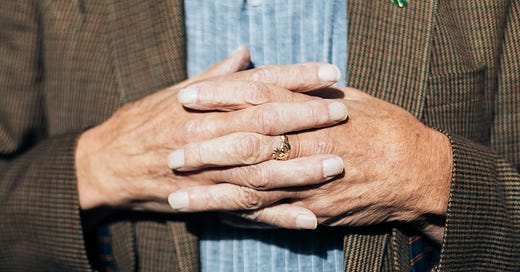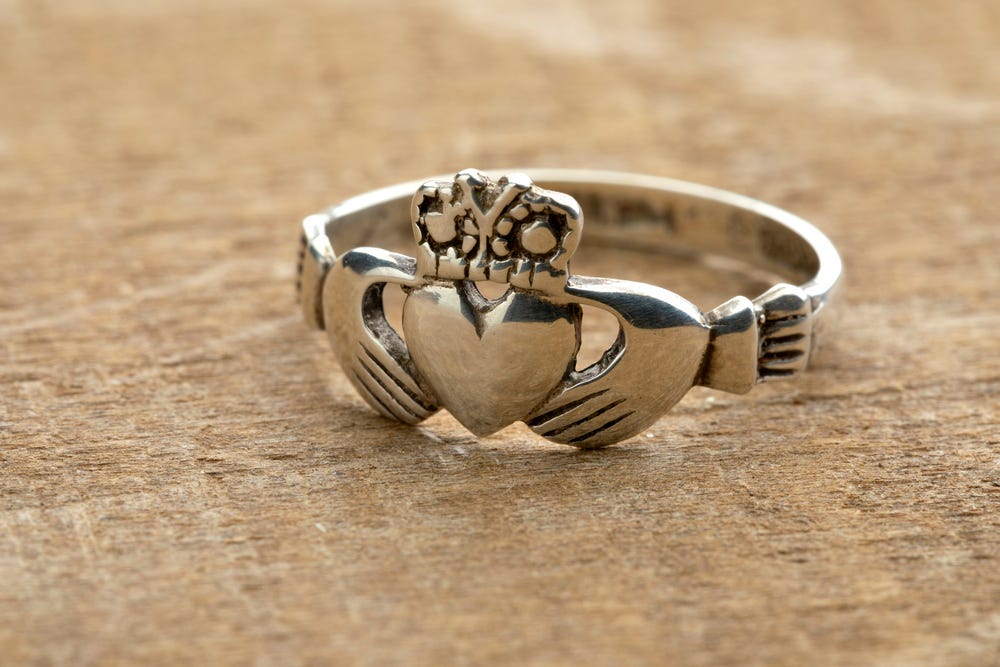The Story of The Irish Claddagh Ring
The Claddagh ring, an enduring symbol of love, loyalty, and friendship, holds a treasured place in Irish culture and beyond. Its distinctive design and rich history weave together tales of romance, resilience, and craftsmanship that have transcended centuries, making it a cherished emblem for many.
Origins and Symbolism
The Claddagh ring's design is unmistakable: two hands clasping a heart, topped with a crown. Each element is imbued with profound meaning. The hands represent friendship, the heart signifies love, and the crown stands for loyalty. The ring's origins trace back to the small fishing village of Claddagh, just outside Galway City in the west of Ireland, around the 17th century.

The Legend of Richard Joyce
One of the most popular legends surrounding the Claddagh ring involves Richard Joyce, a fisherman from Claddagh. According to the tale, Joyce was captured by Algerian pirates and sold into slavery. During his enslavement, he was taught the art of goldsmithing by his Moorish master. Joyce's talent flourished, and he crafted the first Claddagh ring as a token of his enduring love and hope to return to his beloved in Ireland.
When William III negotiated the release of British subjects from Algeria in 1689, Joyce was freed. His master, who had grown fond of him, offered Joyce his daughter’s hand in marriage and half of his wealth if he stayed. However, Joyce declined and returned to Galway, where he found his love waiting. He presented her with the Claddagh ring, symbolizing their reunion and the enduring virtues of love, loyalty, and friendship.
Cultural Significance
The Claddagh ring is more than just a piece of jewelry; it is a symbol deeply embedded in Irish culture and identity. Traditionally, it has been used as a wedding ring, passed down through generations as a family heirloom. The way the ring is worn can convey the wearer's relationship status. When worn on the right hand with the heart facing outward, it indicates the wearer is single. If the heart faces inward, it means they are in a relationship. On the left hand with the heart facing inward, it signifies that the wearer is married.
The Claddagh ring also holds significance beyond romantic relationships. It is often exchanged as a symbol of friendship and loyalty, making it a versatile and meaningful gift for various occasions.
The Craftsmanship and Evolution
Originally made from gold, the Claddagh ring's design has remained remarkably consistent over the centuries. However, modern interpretations have seen it crafted in a variety of metals, including silver and platinum, often adorned with precious stones. Despite these variations, the core elements of the design—the hands, heart, and crown—remain unchanged, preserving the ring's traditional symbolism.
In contemporary times, the Claddagh ring has transcended Irish culture, becoming a popular emblem worldwide. Its timeless message of love, loyalty, and friendship resonates universally, appealing to people of all backgrounds.
Modern-Day Relevance
Today, the Claddagh ring is not only a link to Irish heritage but also a personal statement. It is worn by individuals to express their values and connections. Celebrities and public figures have been seen sporting Claddagh rings, further cementing its status as a cultural icon. The ring's adaptability to modern fashion while retaining its traditional essence makes it a unique piece that bridges the past and the present.
The story of the Claddagh ring is a testament to the enduring power of symbols. From its legendary origins with Richard Joyce to its place in contemporary culture, the Claddagh ring continues to capture hearts around the world. It serves as a poignant reminder of the virtues that bind humanity together: love, loyalty, and friendship. Whether worn as a symbol of romantic commitment or as a cherished family heirloom, the Claddagh ring remains a timeless emblem of Irish heritage and universal human values.








